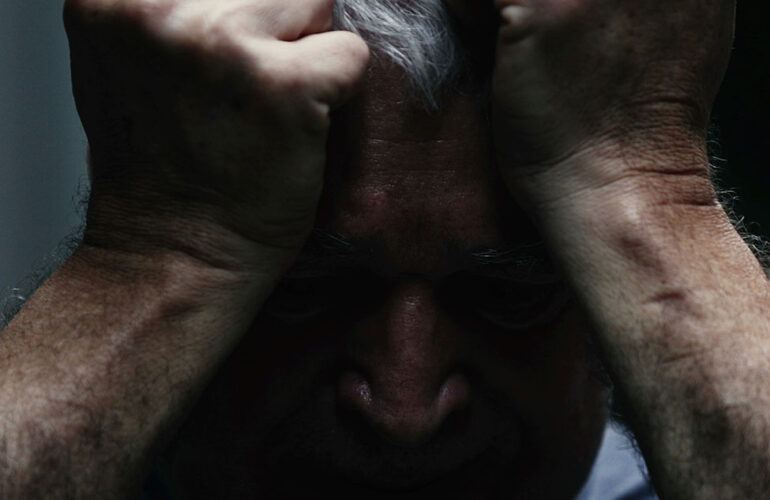Psychotic disorders are fairly common at older ages and represent a diverse group of illnesses with a variety of causes like underlying medical conditions or side effects of medications. Depending upon the individual, these disorders will have different clinical presentations, symptoms and outcomes. Early detection, a comprehensive evaluation and treatment can make a big difference in symptom management and quality of life.
Two Types
In general, a psychotic disorder includes the presentation of hallucinations and delusion, disorganized speech and thinking, and grossly disorganized motor behavior like diminished emotional expression or a flat affect, and unpredictable agitation.
There are two types of psychotic disorders that mental health professionals try to distinguish – primary and secondary. Hallmarks of primary psychotic disorders are the psychotic symptoms themselves. They are the core of the disorder. They can be categorized as late-onset or very-late onset. These disorders also include psychosis as a core symptom of major depressive disorder or bipolar disorder.
On the other hand, secondary psychotic disorders include psychosis as a symptom of another disorder including neurocognitive disorders (Alzheimer’s, Parkinson’s), medical or neurological conditions, delirium, and overuse of certain prescription and illegal drugs.
Prevalence
Schizophrenia in general has a prevalence among older adults of between 0.1-0.5%, which is somewhat lower than the general population at about 1%. One reason for the lower prevalence among older adults is increased premature mortality or earlier death. Whereas 75-80% of all cases occur earlier in life, 20-25% of cases begin in late-life or very-late life.
Women tend to show signs of late-life psychosis more than men, particularly after the age of 80. Due to the advanced age in which psychosis occurs, there is an increased risk for dementia in people diagnosed with schizophrenia and other forms of psychosis.
Schizoaffective Disorder
Another type of psychosis involves a profound disruption in emotions and individuals with schizoaffective disorder tend to have greater severity of illness and worse outcomes. Treatment becomes more challenging and there is an increased risk for suicide. Individuals with schizoaffective disorder are less likely to drive, be married or live independently. They are more likely to have a history of suicidal behavior and more likely to be treated with various antidepressant medications. This disorder may be more common later in life and a primary reason for hospitalization.
Symptoms
While symptoms and clinical features differ from person-to-person, there are several symptoms that are commonly seen including:
- Visual hallucinations
- Auditory hallucinations
- Tactile hallucinations
- Delusional thinking
- Paranoia
Risk Factors
While there may be many conditions that cause psychosis later in life, older adults are particularly at risk for developing psychosis due to prescription or other drugs, toxins in the environment, medical conditions (Dementia with Lewy Bodies), polypharmacy, and drug sensitivity.
Other risk factors include:
- Cognitive decline
- Poor health status
- Visual impairment
- Negative life events
- Female gender
It’s been found in research that being from an immigrant population may put the individual at a greater risk of developing late-life or very-late life psychosis. Having a family history of schizophrenia, avoidant personality, paranoid or schizoid personality disorder (severely emotionally detached), lower socio-economic status and hearing loss are all risk factors associated with psychotic disorders in later life.
Diagnosis
Diagnosing psychotic disorders later in life can be challenging for the mental health professional due to the multitude of possible causes associated with them. Initially, it’s beneficial to rule out if the disorder is primary or secondary, in other words, is it a truly psychotic disorder or one that is secondary to a medial or neurodegenerative disorder. A thorough history can be beneficial in ruling out the two types of disorder.
A discussion with close family members, friends and other healthcare professionals may reveal a history of signs and symptoms for a better diagnosis. A physical examination, cognitive testing and assessment, brain imaging like CT scans or MRIs may rule out structural brain abnormalities associated with psychotic symptoms.
Common laboratory studies can also be helpful including complete blood count (CBC), complete metabolic panel (CMP), thyroid stimulating hormone (TSH), vitamin B12 and folate level, urine toxicology and autoimmune panels. Neuropsychological testing may also differentiate causes of psychosis in later life.
Treatment
Initially, the goal of treatment is to eliminate any possible causes of secondary symptoms, including prescription medications or a medical condition. Next, a combination of pharmacological and psychosocial or supportive care is provided to better manage symptoms and ensure safety and well-being.
Medications should be monitored for effectiveness as well as potentially negative side effects and may be titrated or discontinued. A basic rule in the use of psychotropic medications is to start low and go slow. Antipsychotic drugs should always be prescribed cautiously as they are associated with significant negative outcomes including death (FDA black box warning).
Electroconvulsive Therapy (ECT)
In certain cases, treatment-resistant forms of psychosis can be improved through the use of electroconvulsive therapy or ECT. It has been considered a safe and effective treatment for older adults diagnosed with schizophrenia and successful when combined with medication. ECT may be a first-line of treatment in cases where the individual is very aggressive, experiences grossly disorganized motor behavior or is actively suicidal.
Patient-Centered Care
Any treatment should be highly personalized or patient-centered. Careful attention should be paid to any presenting comorbidities. Non Pharmacological interventions should also be used including cognitive skills training, functional adaptive skills training, social rehabilitation, supported employment and work rehabilitation.
Final Thoughts on Psychotic Disorders in Late Life
The occurrence of psychosis in later life is rather common and can originate from multiple sources. This makes it potentially challenging for the mental health professional to accurately diagnose the specific type of psychotic disorder the individual is exhibiting. Early detection and effective treatments can mean the difference between a good quality of life or profound difficulties and premature mortality.

